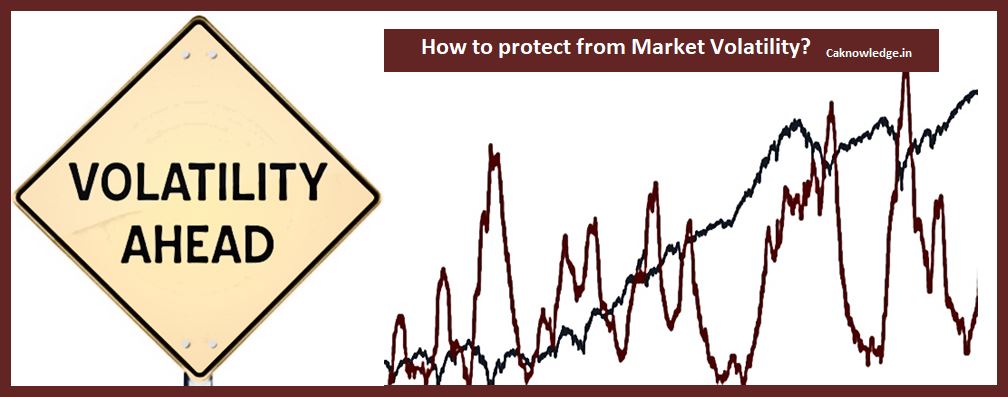Market volatility: Market volatility is the frequency with which the market price of a stock fluctuates in the stock market. The more ups and downs in the price of a security the more volatile is the security. The more a market swings the more volatile it is. These severe ups and downs make the market very fragile for the investors
In this post we discuss few ways with which one can protect from the market volatility.
Quick Links
1. Follow SIP while investing:
SIP is a systematic way of investing a fixed amount at regular planned intervals. As you keep investing your money over time, the volatile market will least affect your portfolio if you have chosen to invest in the companies with strong fundamentals. Choose a few stocks with strong fundamentals such as sound market cap, good historical returns and low debt in its capital structure. Make a SIP arrangement to regularly investment a piece of your savings in these stocks.
2. Diversify your portfolio:
Hold your investments in diversified class of assets. Investments in various assets of different asset classes will definitely protect you from the market volatility. Choose 3 or more investments belonging to distinct sectors/classes/markets. Parking a portion of your investment in principal protected instruments and some more in debt instruments is a better choice than dumping your whole money in a single or two stocks.
3. Ignore long-run predictions that are based on sort-term market movements. Sudden market downturn may be propelled by any unusual phenomenon. It may be due to North Korea’s missile man which could be a man-made catastrophe or an international political crisis. Whatever it may be, assess the impact of the same in long-run. Don’t go by the irrational sentiments of emotional investors which may be very short-run in nature.
4. Rebalance the investments in your portfolio:
Periodically checking the performance of the overall portfolio and each investment’s share in it helps you achieve your investment goals without losing much in the times of high market volatility. Assess if the proportion of each class of investments in your kitty is as per the planned level. If not rebalance them among each other to manage the market oriented risk.
5. Consider the hedging options:
Hedging is an effective way of protecting against future unfavorable market conditions in future. In hedging, a loss in the cash position due to changes in present price levels will be countered by gain in the value of a futures position. And the sudden drop in the futures prices will be offset by the rise in present price level.
6. Value invest:
Follow the value investing strategy in which the shares that are underpriced in the market are bought with a hope that they are worth more than their quoted prices. Find some fundamentally good stocks that are underpriced in the market, buy and hold them without paying any heed to short term market volatility. More the margin of safety better is the portfolio. In the times of the irrational decisions of certain emotional shareholders may propel them to sell their fundamentally strong stocks, Exploit this situation. Buy and hold them. They give the good returns in long run.
Recommended Articles:







